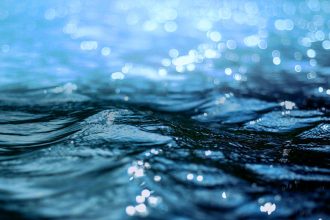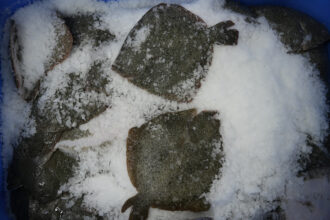B2E Technological Sonar Initiative #27
Discover the latest innovations in the world of Aquaculture and Living Marine Resources! From salmon feeding to the sexual maturation of aquatic animals, delve into the latest developments in the B2E CoLAB Technological Sonar Initiative. This issue showcases groundbreaking advancements, ranging from reproduction prediction systems to the extraction of cellulose from algae for membrane synthesis. Additionally, explore marine biotechnology with studies on trout meat pigmentation and marine compounds as potential anticancer medications.
AQUACULTURE
Aller Aqua to test grass protein in salmon feeds
Aller Aqua Norway has received NOK 10 million (USD 968,000) from the Research Council of Norway to develop fish feed based on new raw materials. The funding support will be used to test grass protein as an admixture in salmon feed. Aller Aqua aims to confirm that green protein extracted from Norwegian meadow plants provides at least as good performance, fish welfare and product quality as soybean meal.
Aquafeed
Discover more here.
Aquaculture breeding prediction system
The invention provides an aquaculture breeding prediction system. The aquaculture and prediction system is divided into two sections: process monitoring during the breeding of aquatic species, and a prediction mechanism that can provide results for the next breeding cycle.
Espacenet
Promotion of synchronous sexual maturation and spawning in aquatic animals
Provided herein is a method of promoting sexual maturity in a collection of aquatic animals comprising feeding the animals with recombinant algae that express a gonad stimulating hormone that promotes sexual maturity. Recombinant algae engineered to express an appropriate gonad stimulating hormone are also provided.
Espacenet
Discover more here.
LIVING MARINE RESOURCES
Extraction of Cellulose from Ulva lactuca Algae and Its Use for Membrane Synthesis
Green algae are a sustainable source of biopolymers for the global demand due to their high photosynthetic efficiency. This study describes the extraction of cellulose from plant systems represented by Ulva lactuca species. To extract various substances, algae were finely ground with the help of solvents (liquid media). This was carried out to achieve the necessary conditions that help to reduce the resistance that this phase shows regarding the transport and transfer of the species being extracted. With the cellulose extracted from algae, we obtained membranes which underwent the process of swelling in liquid media (ethyl alcohol) of different concentrations.
NCBI
Discover more here.
Potential for Saccharina latissima Flour as a functional ingredient in the baking sector
The healthy “superfood” sector is currently quickly developing in Europe, and grocery stores are increasingly stocking macroalgae food supplements. The addition of Saccharina latissima flour in standard bakery recipes brings high-level quantities of minerals, such as K, Fe, Ca, P, and I, as well as an important amount of fiber, and, thus, enhances the crumb matrix’s nutritional quality of wheat flour. The results obtained in this study demonstrate the potential of using S. latissima flour in proportions of a maximum of 3% as a functional ingredient in the production of bakery products with a high nutritional value.
NCBI
Discover more here.
Improved Flesh Pigmentation of Rainbow Trout (Oncorhynchus mykiss) by Feeding Z-Isomer-Rich Astaxanthin Derived from Natural Origin
This study investigated the effects of feeding a diet containing astaxanthin rich in the all-E- or Z-isomers derived from Paracoccus carotinifaciens on the pigmentation and astaxanthin concentration in rainbow trout (Oncorhynchus mykiss) flesh. Z-Isomer-rich astaxanthin was prepared from the P. carotinifaciens-derived all-E-isomer by thermal treatment in fish oil.
Discover more here.
Marine-derived compounds as potential inhibitors of Hsp90 for anticancer and antimicrobial drug development: A comprehensive in silico study
This study aimed the identification of novel inhibitors for the Hsp90 protein (heat shock protein 90), starting from a diverse collection of marine-derived compounds. Five marine-derived compounds were successfully identified. These compounds are notable not only for their structural diversity, which encompasses stilbenes, indoles, pyrroloindoles, and phenylbenzofurans, but also for their marine origins, spanning from demosponges and Didemnum granulatum to tunicate Rhopalaea sp., Spongosorites sp., Zyzzya fuliginosa, and Penicillium chermesinum. Remarkably, despite their structural variances and marine sources, all of these compounds exhibited highly promising interactions with the Hsp90 protein, forming multiple hydrogen bonds significantly enhancing its stability. The safety of these compounds was ensured through, in silico ADMETOX analysis.
Discover more here.





